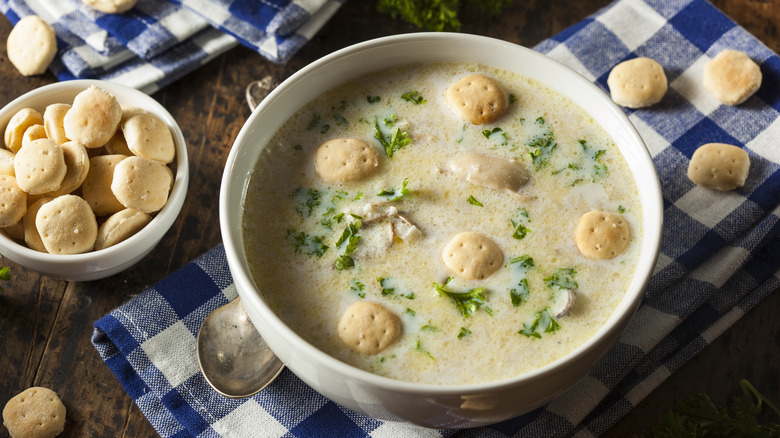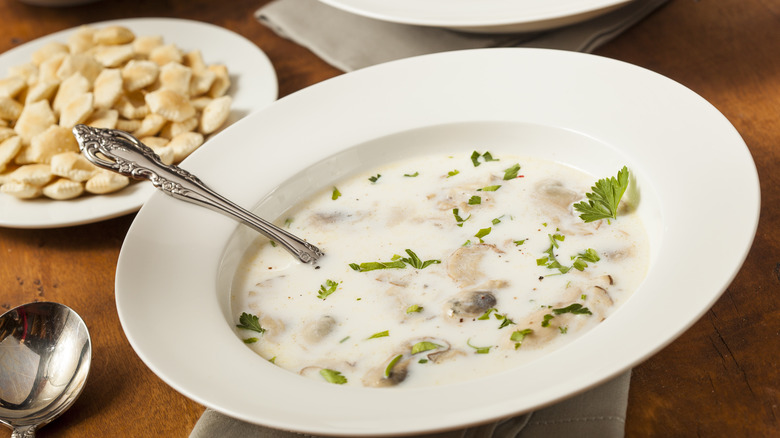Why Do People Eat Oyster Stew On New Year's?
If you confide in a close relative or friend that you're hoping that the new year energizes your sex life or brings you a little bundle of joy you've desperately been wanting, don't be surprised if that family member or confidant serves you some oyster stew at your New Year's gathering. Serving this warm, delicious, and nutritious dish on New Year's is a long-held tradition worldwide that is said to boost libido and fertility.
This holiday ritual actually began with the first Irish immigrants who came to the U.S. in droves in the mid-19th century. With their arrival, they continued to preserve their Catholic dietary custom of refraining from eating meat around Christmas. As a dining alternative during the holiday season, they turned to oyster stew. This holiday staple evolved into a symbolic New Year's ritual to increase sex drive and reproduction as the Irish custom spread to other cultures and became a New Year's good luck tradition around the world.
Different cultures embrace eating oyster stew on New Years
The American South welcomes the love potion powers of oyster stew by holding oyster roasts on the first day of the new year. If you find yourself in a southern state during New Year's, expect some oyster stew with a side of collard greens, black-eyed peas, and cornbread. Oyster stew may have its deepest New Year's roots in New England, as it's been a fixture on the region's holiday menu for centuries.
The stew is served with different side dishes depending on the region in which it's being cooked, but it pairs well with subtle flavors so that the oysters can shine through with their complementary bold flavor. For example, baked potatoes are a great option since they have a mild yet satisfying taste. If you want a tip for hosting your first New Year's Eve party, try bringing your guests some good luck by serving them a delicious aphrodisiac — oyster stew.

